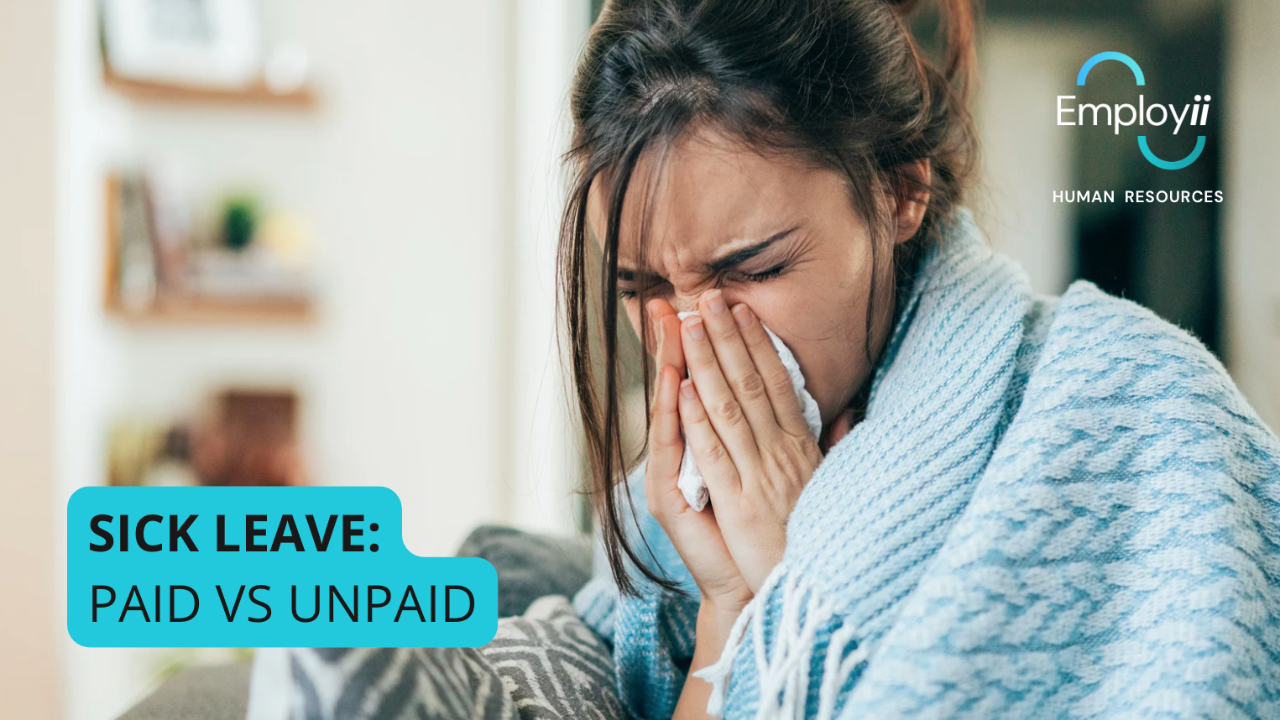
Personal/Carer's (Sick) Leave: Paid vs Unpaid
Oct 19, 2023Sick leave? Personal leave? Carer's leave? They can all be confusing and determining which to take can be stressful, especially when trying to care for a family member or sickness of your own! Let's start with breaking down the difference between paid and unpaid sick leave.
Paid Sick Leave:
- Full-time and part-time employees are entitled to take sick leave if they are unable to work due to a personal injury or illness.
- Full-time employees are entitled to 10 paid sick days per year (part-time employees can access the same entitlement on a pro-rata basis).
- Importantly, any unused sick leave carries over to the next calendar year, meaning employees can access it the following year.
- Most employees will not be paid out any accrued sick leave entitlements, however, some will under their Enterprise Agreement, and even some (not many) Awards.
Unpaid Sick leave:
- Casual employees are entitled to 2 days of unpaid sick leave per occasion.
- Full-time and part-time employees can access unpaid sick leave once they have exhausted their paid sick leave entitlements.
- Unpaid sick leave can be taken in one continuous period, or in multiple occasions (i.e. 4 half days).
- An employer can't take adverse action against an employee for taking unpaid sick leave. However, they can take action where an employee:
- does not adhere to the employer's notice and evidence requirements
- does not use sick leave genuinely (aka the use does not meet the definition of sick leave)
- is absent on unpaid leave for more than 3 months, subject to relevant policies, procedures, employment contracts and legislation.
Unexpected Emergencies:
- Unexpected emergencies consist of any sudden, unforeseen events that create a sense of stress and urgency for an employee.
- In terms of accessing sick leave (i.e. personal/carer's leave) in these circumstances will depend on the specifics of each scenario, assessed on a case by case basis.
- The employer will need to consider:
- how much notice was given (in relation to when the employee found out about the emergency)
- whether working from home or alternative arrangements are available
- the age and independence of the family member who is in need of care (and if the family member can seek alternative solutions i.e. staying with a grandparent)
- whether the employee is required to care for their immediate family or household member because of the emergency. Note: if there is no need to care for them, or, there is no personal injury/illness resulting from the emergency, then personal/carer's is not the appropriate leave type.
Continuous Service:
- Continuous service is the amount of time an employee has been employed by their employer.
- BUT it doesn't always include periods of unpaid periods, such as unpaid leave.
- Some examples of leave that ARE included in continuous service are: unpaid pandemic leave, and unpaid community service leave.
- Most unpaid leave doesn't count towards an employee's service, even if it has been agreed to by the employer.
- HOWEVER, just because unpaid leave doesn't count towards service, this doesn't mean it breaks an employee's period of continuous service. For example, unpaid parental leave.
If you're an employee or employer with questions about leave entitlements, please reach out to the Employii team at [email protected]
Author: Chelsea Finlay (HR Officer).

